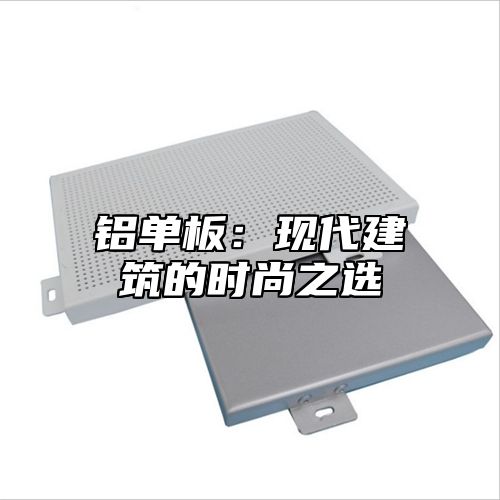

 Industry information
Industry information
Friends, have you ever thought that the seemingly ordinary buildings around us actually hide many "fashion secrets"? Let me reveal to you one of the "fashionistas" - aluminum veneer.
Do you think the name aluminum veneer sounds a bit high-end? That's right, it is indeed a "high-end material" in modern architecture. What is aluminum veneer? It is a type of sheet made of aluminum material, widely used in fields such as building exterior walls and interior decoration.
When it comes to aluminum veneer, its advantages cannot be ignored. It is lightweight and durable. Do you know that the density of aluminum veneer is only 2.7g/cm ³, which is much lighter than steel. This means that while ensuring strength and stability, aluminum veneer can also reduce the weight of buildings and lower construction costs. Aluminum veneer has strong corrosion resistance, is not easy to rust, and has a service life of over 30 years.
Aluminum veneer has rich colors and patterns. It can customize various colors and patterns according to customer needs, making the building more personalized. Just like how we wear clothes, aluminum veneer can also "match" different styles for buildings. Believe it or not, which of those fashionable buildings is not a masterpiece of aluminum veneer?
Let's talk about the environmental performance of aluminum veneer. Aluminum veneer is produced using pollution-free production processes that are environmentally friendly. Aluminum veneer can be recycled, saving resources and reducing waste. In this way, aluminum veneer also performs quite well in terms of environmental protection.
What are the applications of aluminum veneer in construction? It can be used as an exterior wall for buildings. Aluminum veneer exterior walls have functions such as insulation, thermal insulation, sound insulation, and moisture resistance, which can effectively improve the comfort of buildings. Aluminum veneer exterior walls also have properties such as fire prevention, lightning protection, and wind pressure resistance, ensuring the safety of buildings.
Aluminum veneer can also be used for interior decoration. Ceiling, wall, background wall, etc., aluminum veneer can all exert its charm. Its surface is smooth and easy to clean, making indoor spaces more tidy and beautiful. Aluminum veneer can also be customized into various shapes and patterns according to design requirements, making interior decoration more creative.
I want to share a story that I personally experienced. Once, I visited a newly built office building and found that its exterior walls were decorated with aluminum veneer. The architects cleverly utilized the colors and patterns of aluminum veneers to make the entire building look both fashionable and grand. I stood downstairs and couldn't help but exclaim: Aluminum veneer is truly the fashionable choice for modern architecture!
Aluminum veneer also has its limitations. Its impact resistance is relatively weak and not suitable for use in situations that are prone to impact. The price of aluminum veneer is also higher than some traditional materials. In my opinion, these drawbacks are not enough to conceal the advantages of aluminum veneer.
Aluminum veneer, as a modern building material, has become a "fashionista" in the construction industry due to its lightweight, durable, environmentally friendly, and beautiful characteristics. I believe that in the future, aluminum veneer will play a greater role in the field of construction and bring more surprises to our lives.
I have a question for everyone: What other potential uses do you think aluminum veneer has? Welcome to leave a comment in the comment section, let's discuss this topic together. Don't forget, follow me for more exciting discoveries!